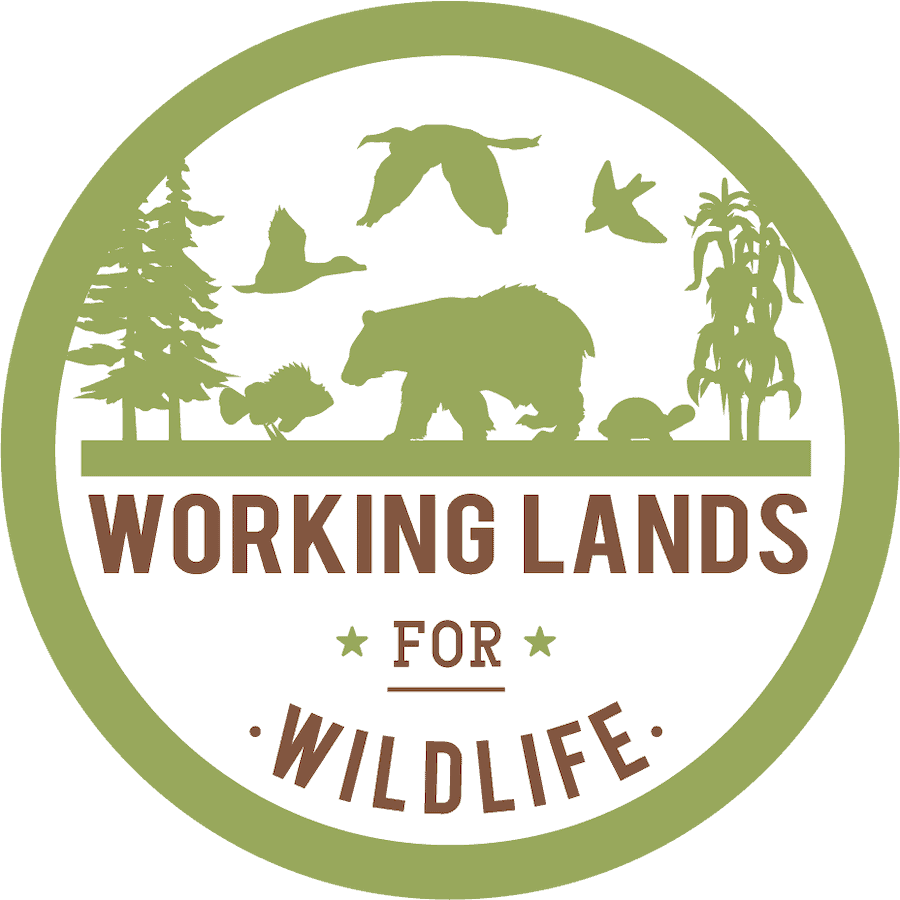-
 WLFW Pollinator Conservation Webinar Series: Session # 7 Do I Need a Pollinator Seed Mix and How to Build One
WLFW Pollinator Conservation Webinar Series: Session # 7 Do I Need a Pollinator Seed Mix and How to Build One
-
Session 7 of WLFW Pollinator Conservation Webinar series, presented by Kelly Gill, Pollinator Conservation Specialist for the Xerces Society and a Partner Biologist with the USDA Natural Resources Conservation Service. This session focuses on building seed mixes designed for pollinators and is the second of three sessions on “pollinator habitat” in the series. Topics covered include recognizing whether a seed mix is needed, various seed mix options through NRCS, and specific information needed to build a seed mix such as habitat design and species selection.
Located in
Training Resources
/
Webinars and Instructional Videos
/
WLFW Pollinator Conservation Webinar Series
-
 WLFW Pollinator Conservation Series: Session #6 Planning & Establishing Pollinator Habitat
WLFW Pollinator Conservation Series: Session #6 Planning & Establishing Pollinator Habitat
-
Session 6 of WLFW Pollinator Conservation Webinar series, presented by Celia Vuocolo, WLFW Pollinator Coordinator-East with Quail Forever & USDA-NRCS. Topics covered include a step by step process for planning and establishing pollinator habitat, including site selection, options for restoration and Farm Bill programs planning process.
Located in
Training Resources
/
Webinars and Instructional Videos
/
WLFW Pollinator Conservation Webinar Series
-
 WLFW Pollinator Conservation Series: Session #5 SWAP & Listed Species in the Southeast
WLFW Pollinator Conservation Series: Session #5 SWAP & Listed Species in the Southeast
-
Session 5 of WLFW Pollinator Conservation Webinar series, presented by Celia Vuocolo, WLFW Pollinator Coordinator-East with Quail Forever & USDA-NRCS. Topics covered include an overview of a selection of State Wildlife Action Plan SGCNs and federal/state listed pollinator species. Conservation planning strategies for planners and biologists.
Located in
Training Resources
/
Webinars and Instructional Videos
/
WLFW Pollinator Conservation Webinar Series
-
 WLFW Pollinator Conservation Webinar Series: Session # 4 Monarch in the Southeast
WLFW Pollinator Conservation Webinar Series: Session # 4 Monarch in the Southeast
-
Session 4 of WLFW Pollinator Conservation Webinar series, presented by Dr. Ray Moranz, Grazing Lands Pollinator Ecologist for the Xerces Society for Invertebrate Conservation. This session focuses on the Monarch butterfly in the Southeast, and is the second of three sessions on “pollinator species of conservation concern” in the series. Topics covered include Monarch life history, conservation threats & status, management considerations and Southeast region plants species that support Monarchs.
Located in
Training Resources
/
Webinars and Instructional Videos
/
WLFW Pollinator Conservation Webinar Series
-
 WLFW Pollinator Conservation Webinar Series: Session #3 Bumble Bees in the Southeast
WLFW Pollinator Conservation Webinar Series: Session #3 Bumble Bees in the Southeast
-
Session 3 of WLFW Pollinator Conservation Webinar series, presented by Celia Vuocolo, WLFW Pollinator Coordinator-East with Quail Forever & USDA-NRCS.
This session focuses on Bumble Bees in the Southeast, and will be the first of three sessions on “pollinator species of conservation concern” in the series. Topics covered include bumble bee life history, conservation threats & status, species found in the southeast, management considerations and plants for supporting bumble bees.
Located in
Training Resources
/
Webinars and Instructional Videos
/
WLFW Pollinator Conservation Webinar Series
-
 WLFW Pollinator Conservation Webinar Series: Session #2 Who are the Southeast Region’s Pollinators?
WLFW Pollinator Conservation Webinar Series: Session #2 Who are the Southeast Region’s Pollinators?
-
Session 2 of WLFW Pollinator Conservation Webinar series, presented by Celia Vuocolo, WLFW Pollinator Coordinator-East with Quail Forever & USDA-NRCS.
In the second session of the series, topics covered include an overview of pollinator communities in the Southeast, six native been families in the US, other major pollinator groups and some fundamental planning considerations and recommendations.
Located in
Training Resources
/
Webinars and Instructional Videos
/
WLFW Pollinator Conservation Webinar Series
-
 WLFW Pollinator Conservation Webinar Series: Session #1 Pollination Biology
WLFW Pollinator Conservation Webinar Series: Session #1 Pollination Biology
-
Session 1 of WLFW Pollinator Conservation Webinar series, presented by Celia Vuocolo, WLFW Pollinator Coordinator-East with Quail Forever & USDA-NRCS.
In this first session of the series, topics covered include threats to pollinators, plant pollination strategies, pollinator foraging behaviors, and a quick overview of bees of conservation concern.
Located in
Training Resources
/
Webinars and Instructional Videos
/
WLFW Pollinator Conservation Webinar Series
-
SE FireMap Phase II: Developing the Decision Support System Webinar
-
A free and open webinar for practitioners and the public to learn about the Southeast (SE) FireMap and next steps in its development as an operational decision-support tool for resource managers. In this next phase, the SE FireMap aims to provide up-to-date information to support fire management and conservation efforts. Representatives from USDA-NRCS, Tall Timbers Research, and USGS lead the webinar.
Located in
SE FireMap 2.0
/
Webinars
-
 WLFW Northern bobwhite, Grasslands, and Savannas Framework - Partners’ webinar 3/2/2022
WLFW Northern bobwhite, Grasslands, and Savannas Framework - Partners’ webinar 3/2/2022
-
On March 2, 2022 Bridgett Costanzo of NRCS's Working Lands for Wildlife and Jessica McGuire of QF presented on the WLFW framework for NOBO, grasslands and savannas. Ms. Costanzo presented on the content of the new framework document, the priority areas and conservation practice goals set by the 24 NRCS state offices, and responses received from the needs assessment survey. Ms. McGuire presented on staffing and monitoring plans associated with launching this framework.
Located in
Training Resources
/
Webinars and Instructional Videos
-
Northern Bobwhites and Fire: A Perfect Match
-
Prescribed fire, bobwhite ecology, and local site conditions need to be aligned for optimal bobwhite population response. This course discusses the context of fire frequency, scale, and seasonality for bobwhite management and restoration.
Located in
Training Resources
/
Webinars and Instructional Videos























